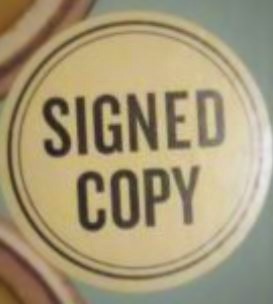Not Ready Yet for the Bargain Section: Analyzing Barnes & Noble and its Underutilized Assets
- Chett Charavej

- Apr 26, 2018
- 5 min read
Updated: Mar 20, 2022

Last summer I ordered a signed book from the Barnes and Noble (B&N) website to be shipped to me. Upon opening the box; I noticed that the autograph label that usually comes with signed books was not on it.
Since I wanted some form of confirmation that this was authentically signed by the author, I called the Barnes & Noble 800 number and asked the customer service agent whether Barnes & Noble could simply send me a sticker. After talking to her manager, the agent said that the company would not be able to send an autographed sticker. She then suggested that she could send me another book copy but could not guarantee that the signed/autographed label would be on the new book. I was also informed that I could not return the original order back to the store as Barnes & Noble did not have a policy or process to do so. I ended up keeping the copy upon realizing that it was not worth the time and effort.
I thought about this interaction after hearing that Barnes & Noble had a terrible 3rd fiscal quarter: a decline of 5.3% compared to the prior year, on top of the 6.4% decline for holiday revenue, which has led to massive layoffs of employees nationwide. The poor quarter was due to declines related to in-store and online sales, terrible holidays sales, and a lack of sure-fire hits or hot trends like a new Harry Potter book or adult coloring books. In its March 1, 2018 press release regarding its fiscal reporting, Barnes & Noble outlined its strategy for a bounce back:
“strengthening the core business by enhancing the customer value proposition;
improving profitability through an aggressive expense management program, which will be used to fund growth initiatives;
accelerating execution through simplification; and
innovating for the future, which will position the company for long-term growth.”
So far Barnes & Noble has laid off experienced staff resulting in $40 million in expected cost savings. They have further stated that they would be opening smaller stores that will be about 14,000 square feet smaller than the typical superstores. More promising, they will allow the ability for purchasing online and either having it shipped from the store or picking it up from the store.
Is all this enough? Certainly, some of the thought pieces out there as well as some of the reader’s comments made the following points and suggestions:
Downsize its current superstores,
Remove non-book products such as CDs and DVDs, toys, journals and gifts,
Pull the plug on or sell off its Nook tablet and e-readers business, and
“localizing” each bookstore location
While these ideas seem sound, I would say that Barnes & Noble has some current assets and resources that are underutilized and could be used to increase sales which I will discuss below. Full disclosure: I used to work at Barnes and Noble from 2003-2005 and am currently a Barnes and Noble Member and thus more than a casual customer.

Barnes and Noble Membership Rewards
Loyalty Membership is a common way to encourage loyalty and increase foot traffic in stores and Barnes and Noble is no exception to using this method. While contemporaries like CVS and Best Buy offer their memberships for free, Barnes & Noble charges for its membership. For $25, a Barnes and Noble member gets the following benefits:
10% off most products,
40% off hardcover sellers,
Free Online Shipping, and
in-store/online coupons for additional discounts on purchases.
In an age where Amazon Prime provides free two-day shipping, online film/television viewing on demand, music on demand, and cloud storage of documents, Barnes & Noble’s paid membership seems underwhelming. Nevertheless, six million people have opted to become Barnes & Noble members and are a valuable asset to the company as they spend twice as much as non-members and are fairly reliable to continue with their membership (70% retention rate).
Indeed, Barnes & Noble membership still has room to grow further in both adding members as well as increasing member engagement. To increase membership, a more aggressive promotion of the policy should occur, perhaps a 30-day grace period to try a Barnes & Noble membership prior to paying, not unlike Amazon Prime’s membership. While stores such as Target and Best Buy will match prices on their own website, Barnes & Noble does not. It would be wise for Barnes & Noble to at least allow members to get a price match with its own website. It might also be a good idea to separate into two tiers - one that would provide the current benefits and another at double the price ($50) that could provide added benefits such as:
deeper everyday discounts of 15-20%
the ability to price match Amazon and/or a limited number of competitors
apply discounts to pre-orders (something it currently does not do).
Furthermore, while Barnes and Noble sells signed books on its website, special or exclusive signings from authors could be limited to these higher tiered members thus reinforcing how special being a member is.
BN.com, Barnes and Noble Review, and the Omnichannel
BN.com did a revamp and somewhere in the website (I still do not even know how to get to the site) is a website run by Barnes and Noble that has reviews, interviews and podcasts (which also can be found on iTunes.) This website, BarnesandNoblereview.com seems almost like an afterthought as I was unable to find a link to a review or podcast from BN.com. In fact, while looking at the book listing page for the New York Times bestseller, The Woman In the Window on Barnes & Noble’s website, there is no easily found link to the podcast that Barnes & Noble conducted with the author. It is hard to believe so much effort is put into the site and there is not even a podcast interview with the author that could actually drive sales. Also, I have noticed how small and independent bookstores usually have book readings by authors posted on YouTube (even videos of interviews from Borders, B&N’s vanquished competitor are still online) Barnes and Noble is falling behind in the social media era and should post these and more content geared towards that end.
The podcasts are not just to promote books but also to keep the Barnes and Noble brand relevant and engage customers, including the younger ones who are more online shopping oriented. I would even go so far to say that podcasts could be monetized to allow for commercial breaks from Barnes & Noble suppliers (like Starbucks, film studios, book publishers) or others to advertise. Advertising does appear to be something BN.com is pursuing as it has a BN.com media kit but is limited to banner ads on the website thus limiting the amount of potential monetization that could be achieved.
Finally, while there is a lot of discussion about reducing or halting the sales of CDs, toys,and games, I would probably wait to see whether Best Buy's plan of stopping sales of these items and the Toys R Us bankruptcy result in an increase in these product sales for Barnes & Noble.

In Closing
Let’s be clear here, Barnes and Noble’s ability to survive will be based on being able to provide a better value and experience than Amazon while offering something that local bookstores are not able to do. The proposals that I outline are simple steps to help existing customers to shop more and to utilize its current assets to drive more revenue.
About the author

Chett Charavej is a cross-functional professional who has experience as a business analyst and media researcher. He has worked for industries as diverse as broadcast and cable (NBC, Discovery Network, and ABC), consumer finance (Citigroup and American Express) and consumer food products (PepsiCo). He also volunteers at the Volunteer Referral Center as an interviewer of individuals interested in volunteering at New York’s many non-profit agencies. Chett also prefers reading physical books more than e-reading.






















Comments